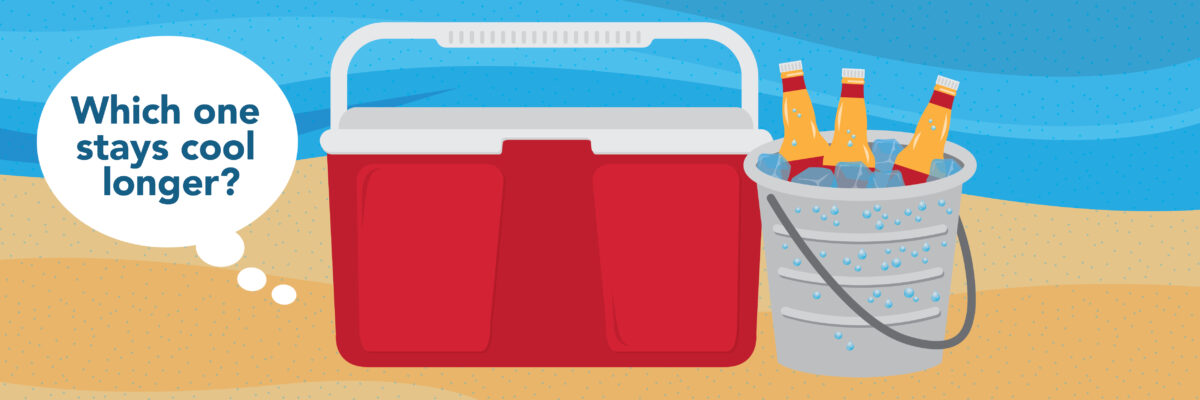by Pat Stanton
How do you keep drinks cool when you’re out far from home? Bags – or blocks – of ice (duh)!
Consider ice, a precious energy resource in the great outdoors. Your choice of a container dramatically impacts your results: To keep cool all day will require much more ice (your precious resource) if you choose an open metal bucket, compared to a well-insulated cooler.
Getting to Zero
When you want to decarbonize the building sector, your precious energy resource is zero-carbon electricity (including its generation, transmission and distribution). Poorly insulated buildings waste energy resources, like an open metal bucket wastes precious ice on a hot day.
A key RMI study found that energy efficiency plus wind, solar and storage resources created the same level of services to customers for less money and time than wind, solar and storage alone. Energy efficiency alone can’t solve the decarbonization riddle. But using efficiency to get the very most out of every zero-emission kilowatt-hour generated is smart science, smart economics, and smart public health policy.

A Vacation From Worry
Trying to decarbonize without energy efficiency would be much harder. Let’s stop worrying and do the smart thing. Cut energy use now, so that our precious energy resources can stretch further and provide more value.
Cleaner, more efficient energy and less pollution is a win-win. For more information contact policy@e4thefuture.org.
–Pat Stanton is E4TheFuture’s Director of Policy
